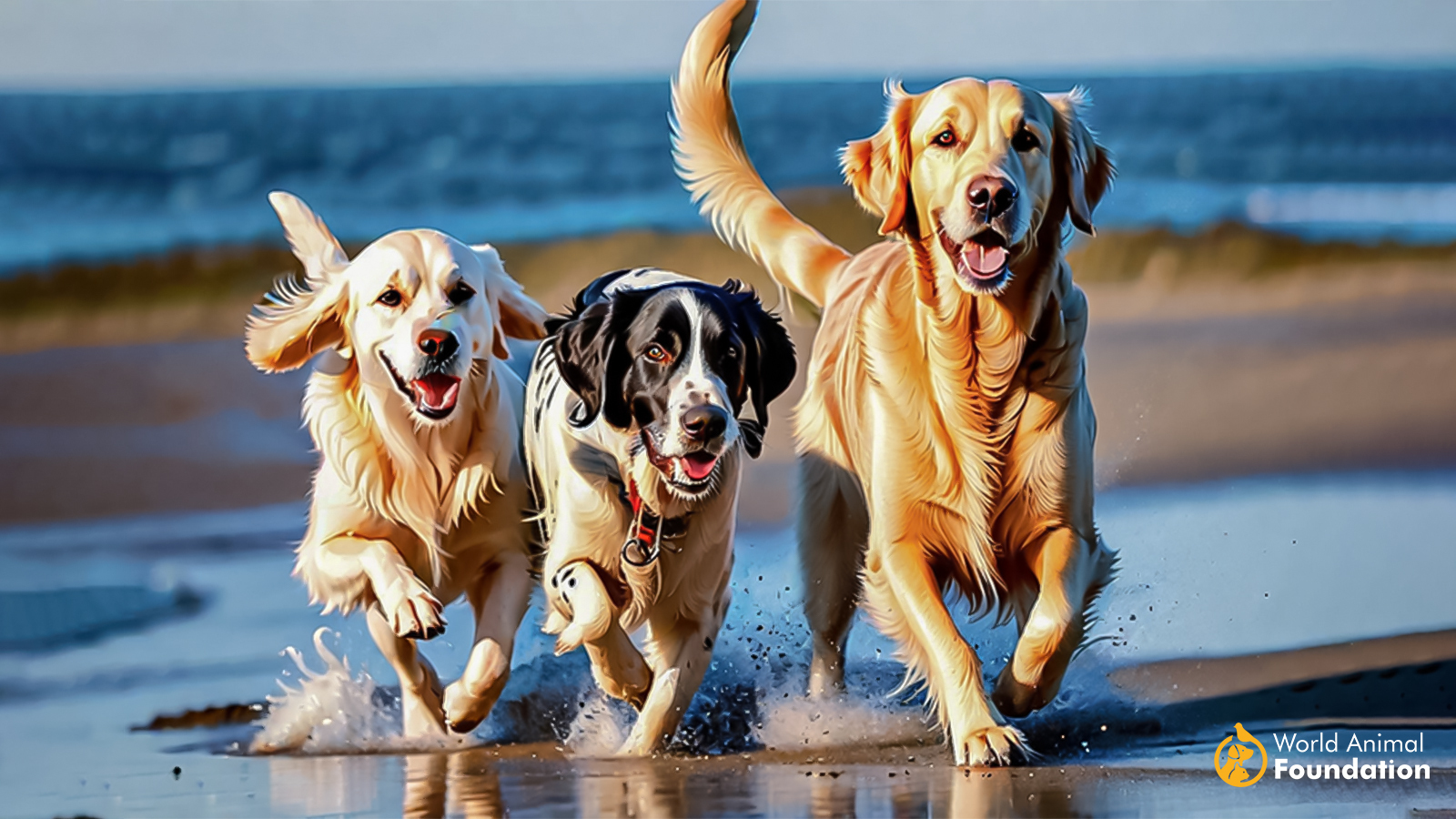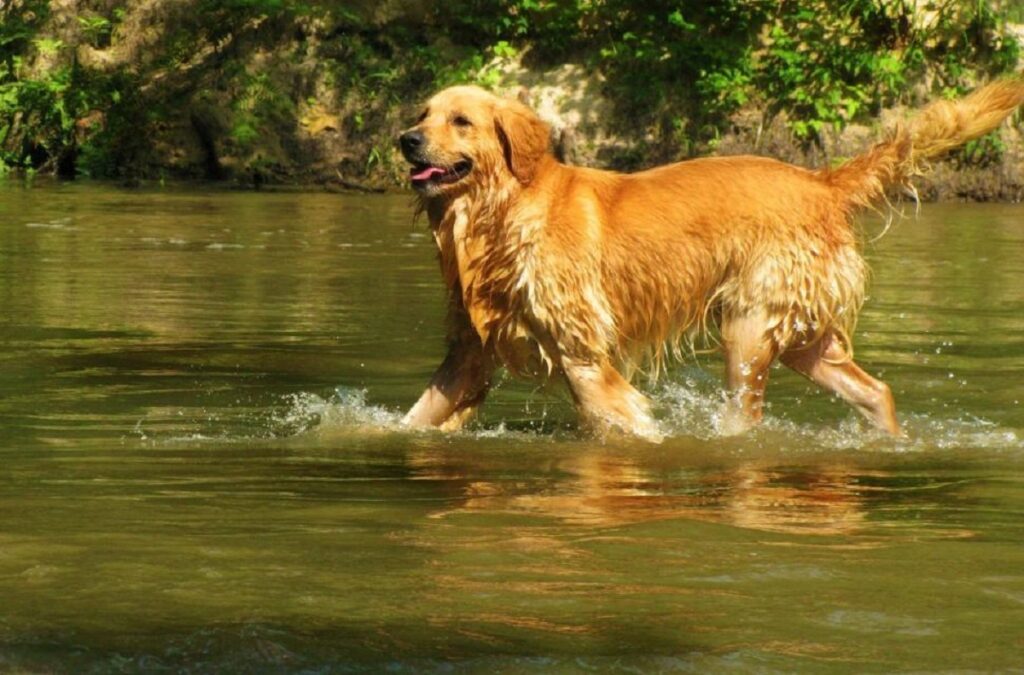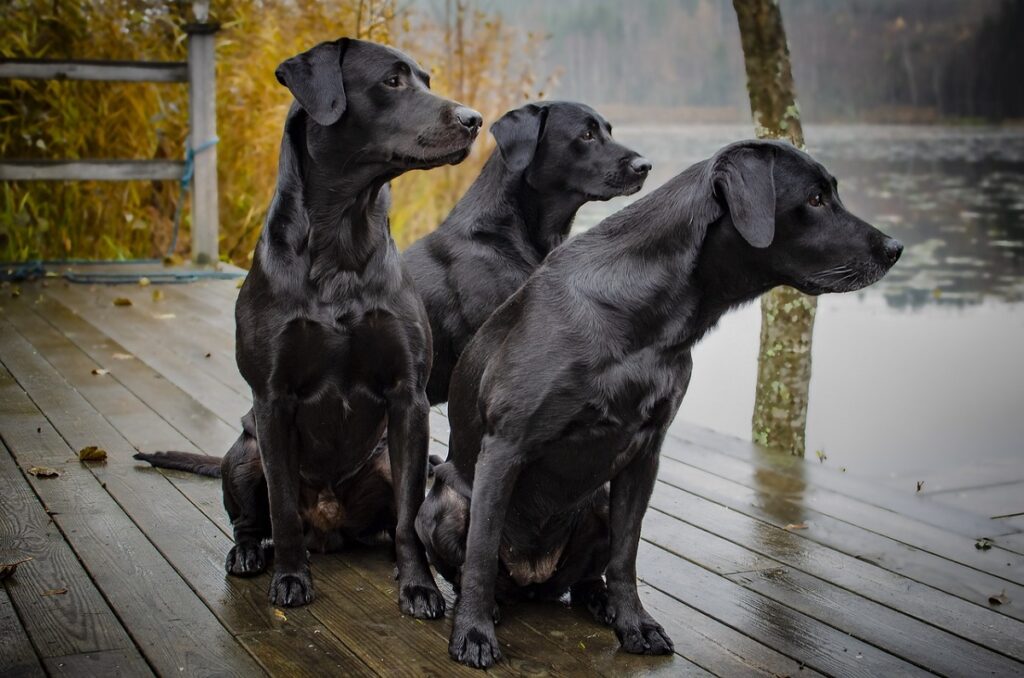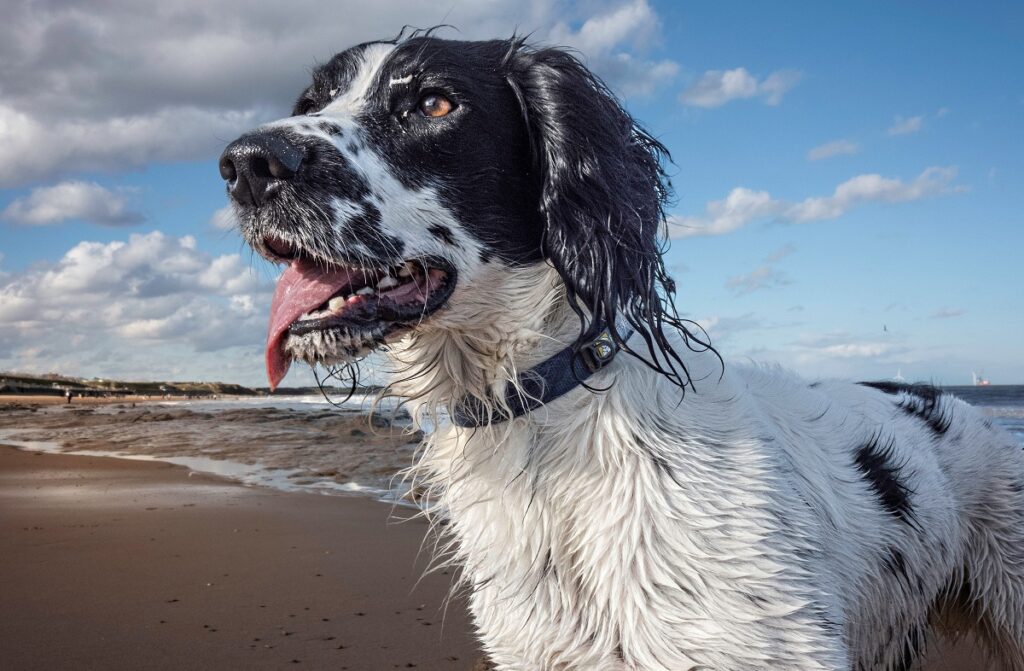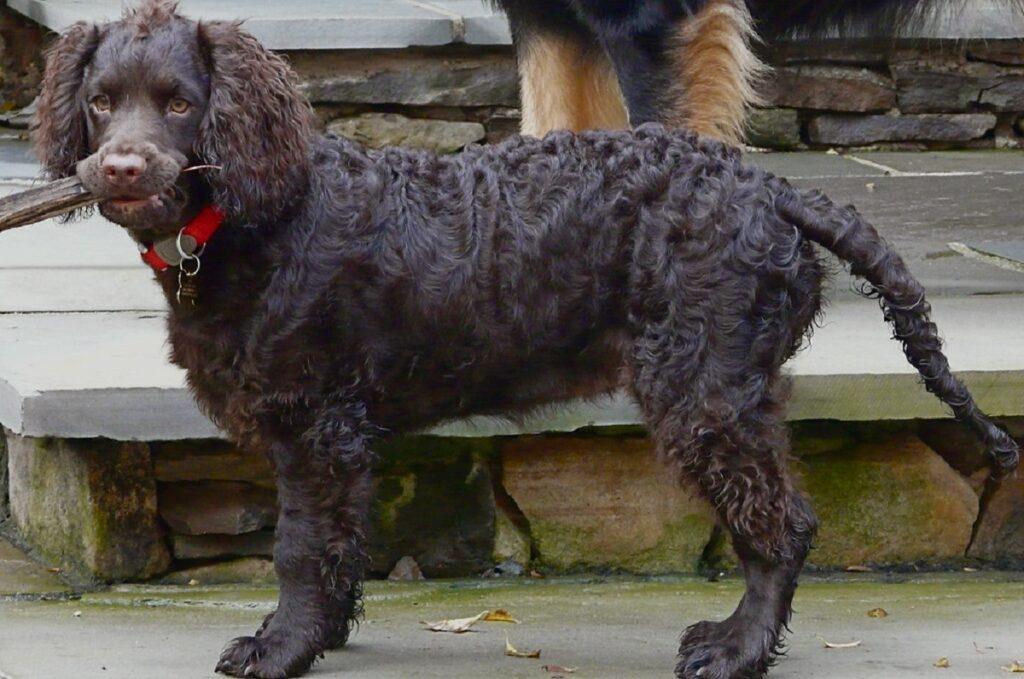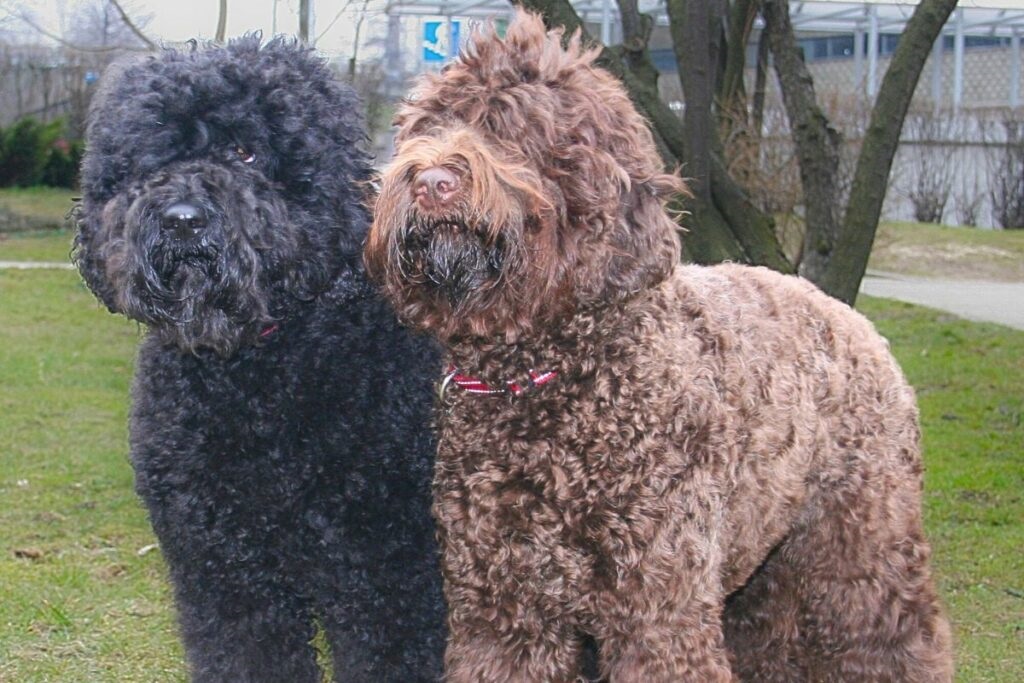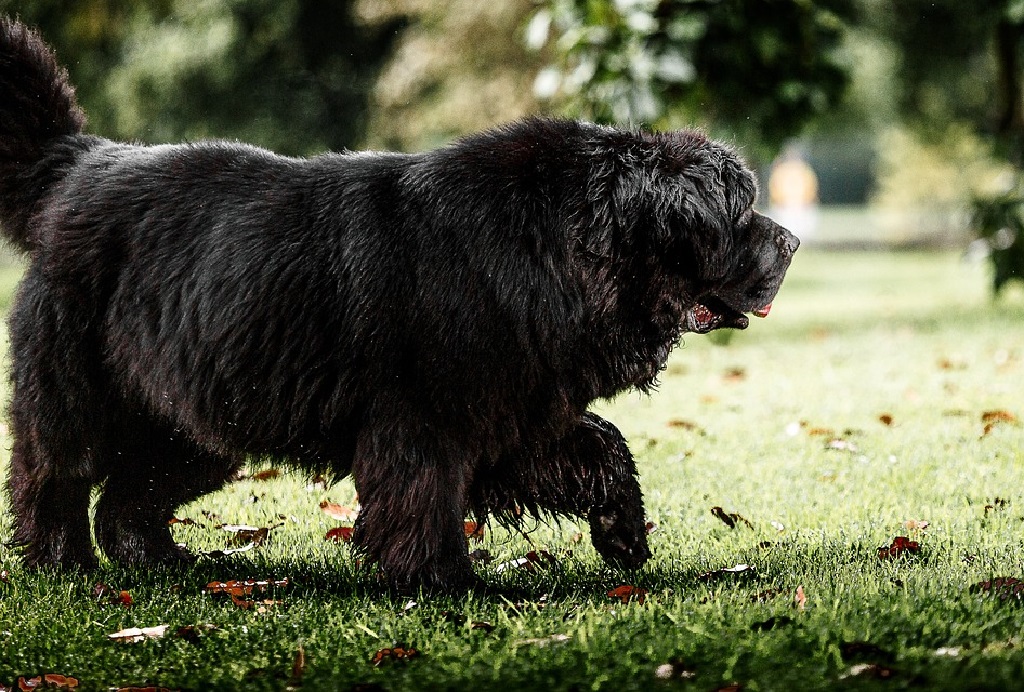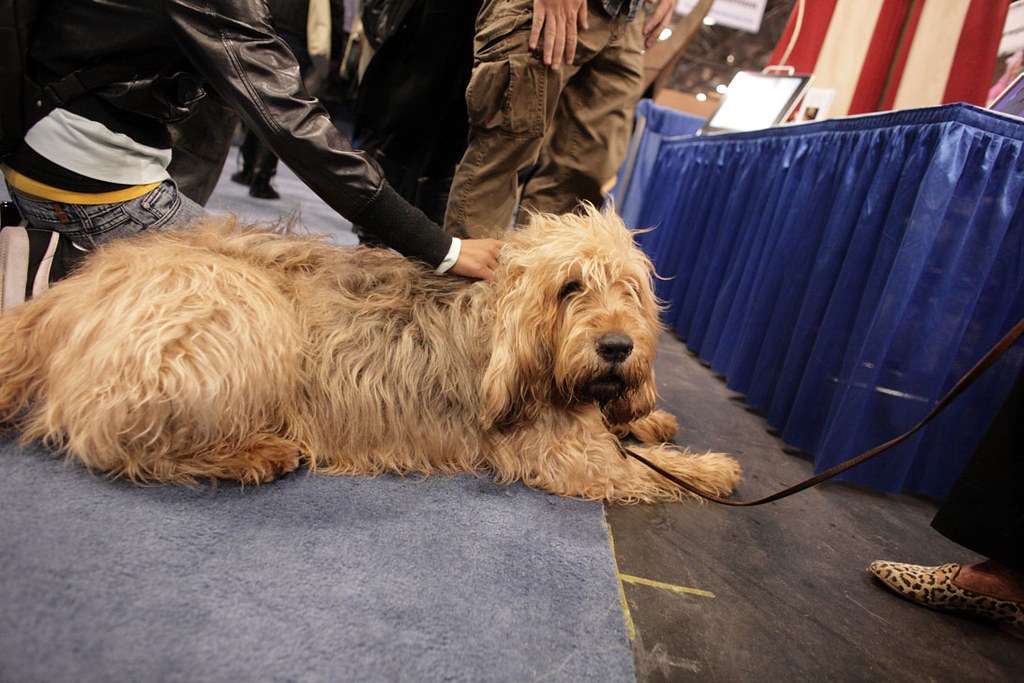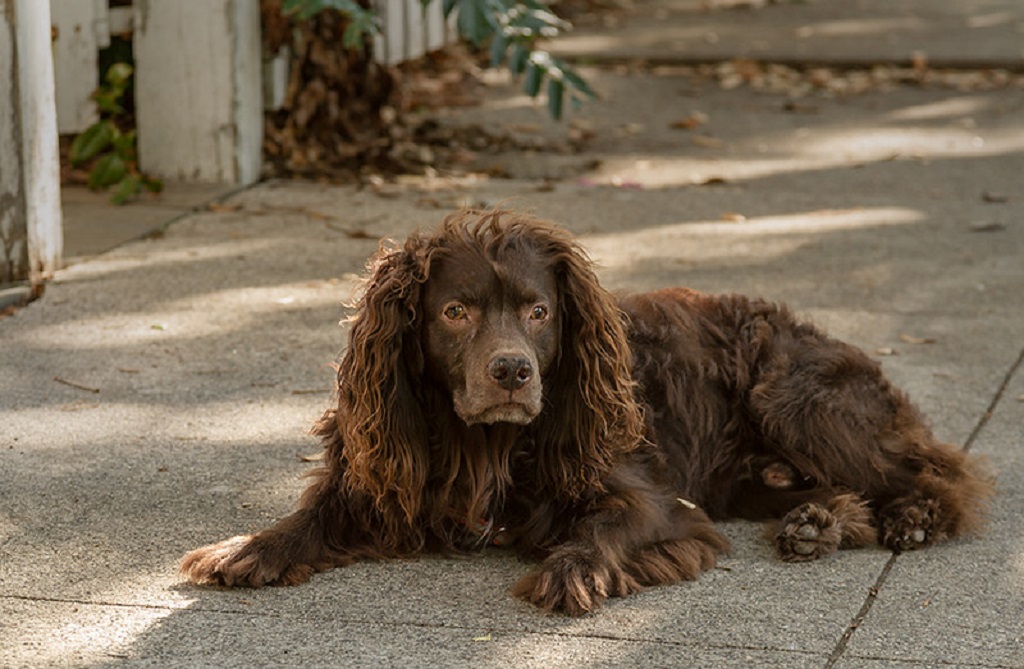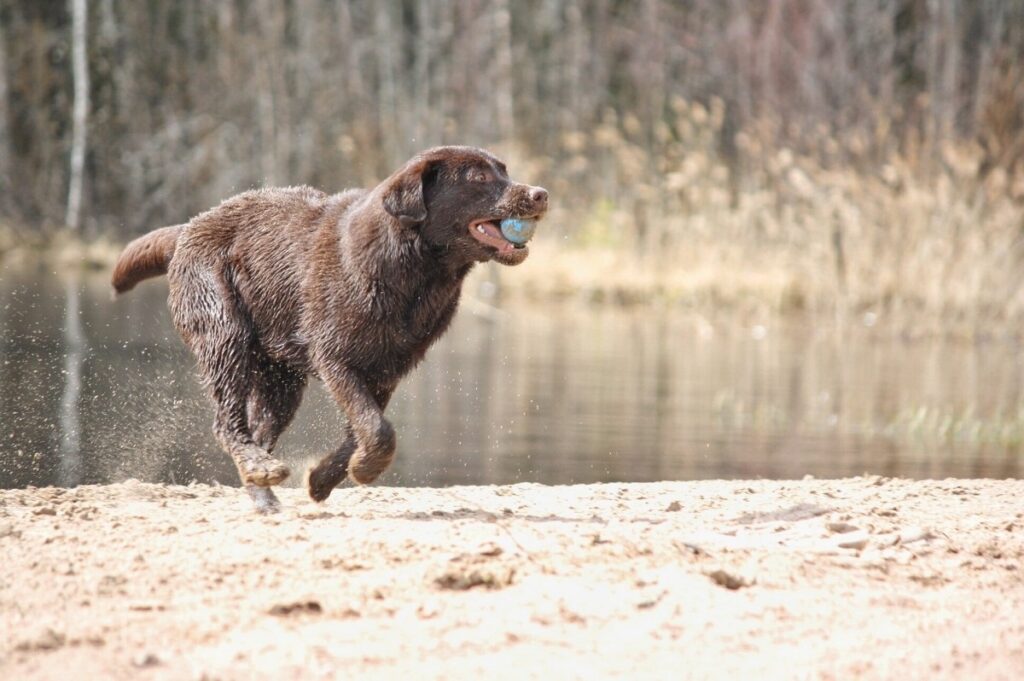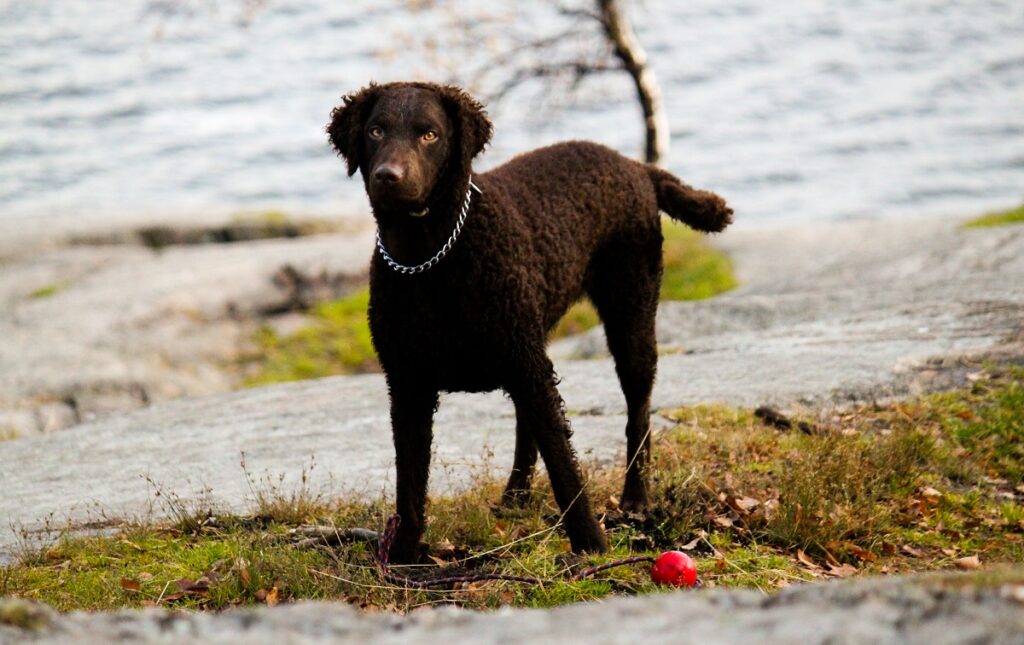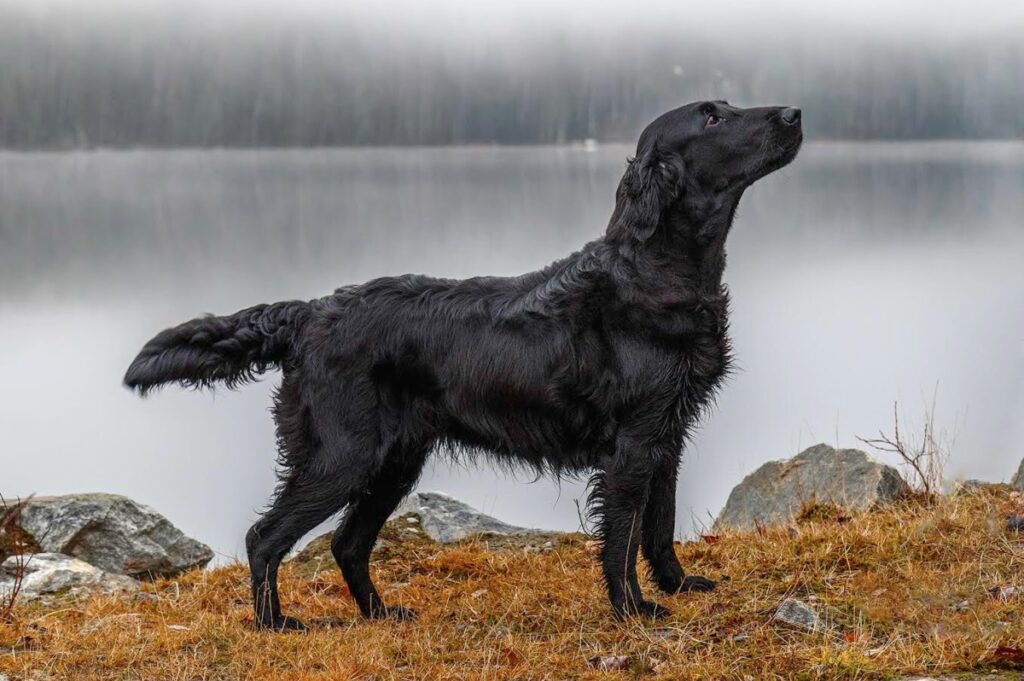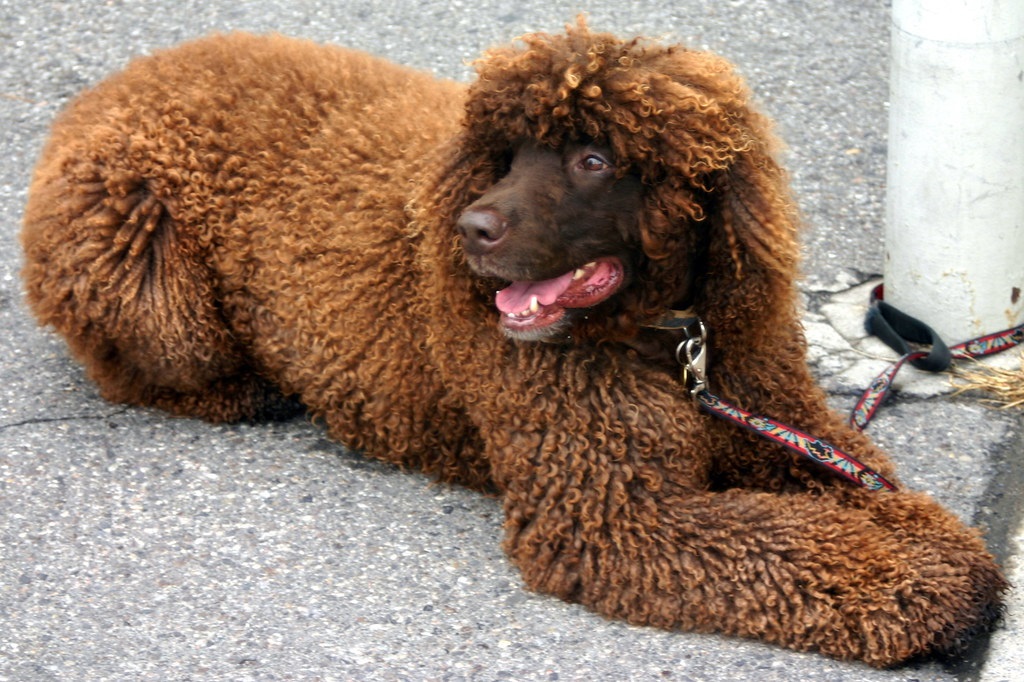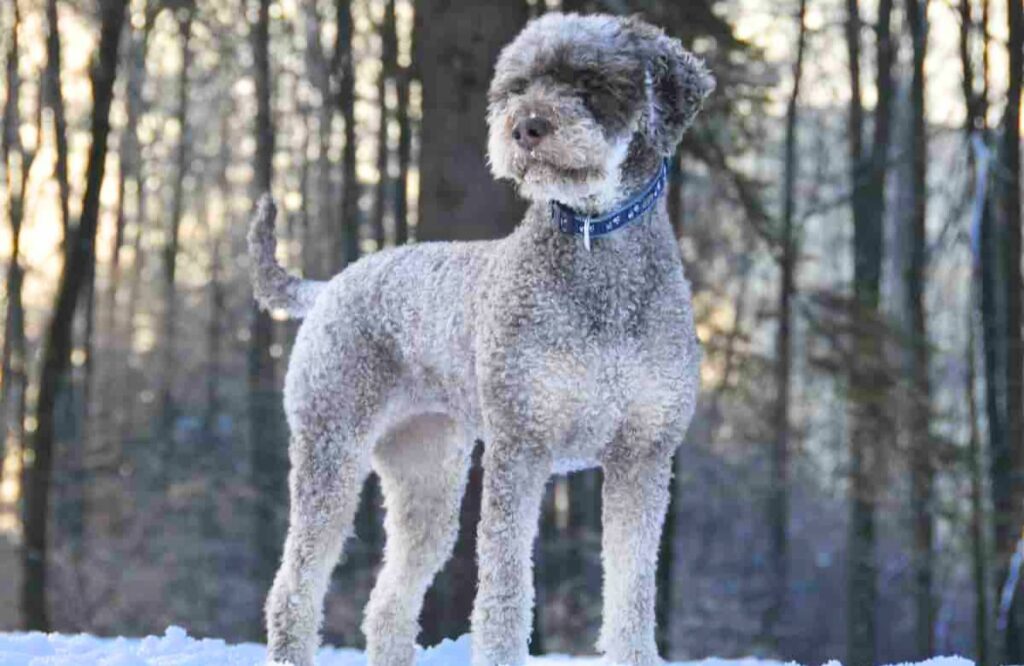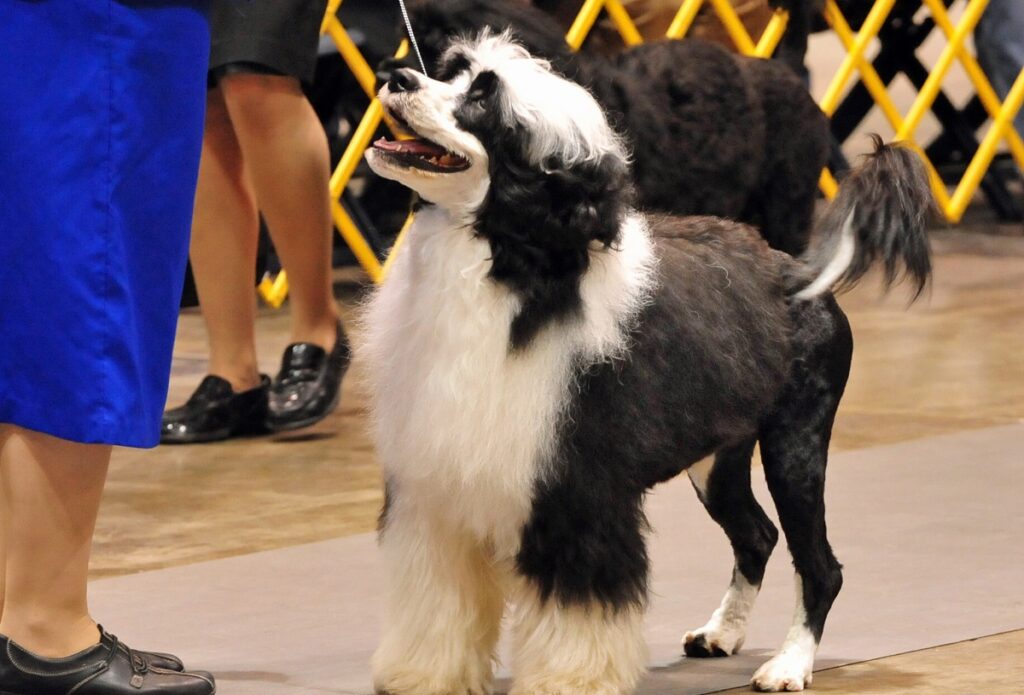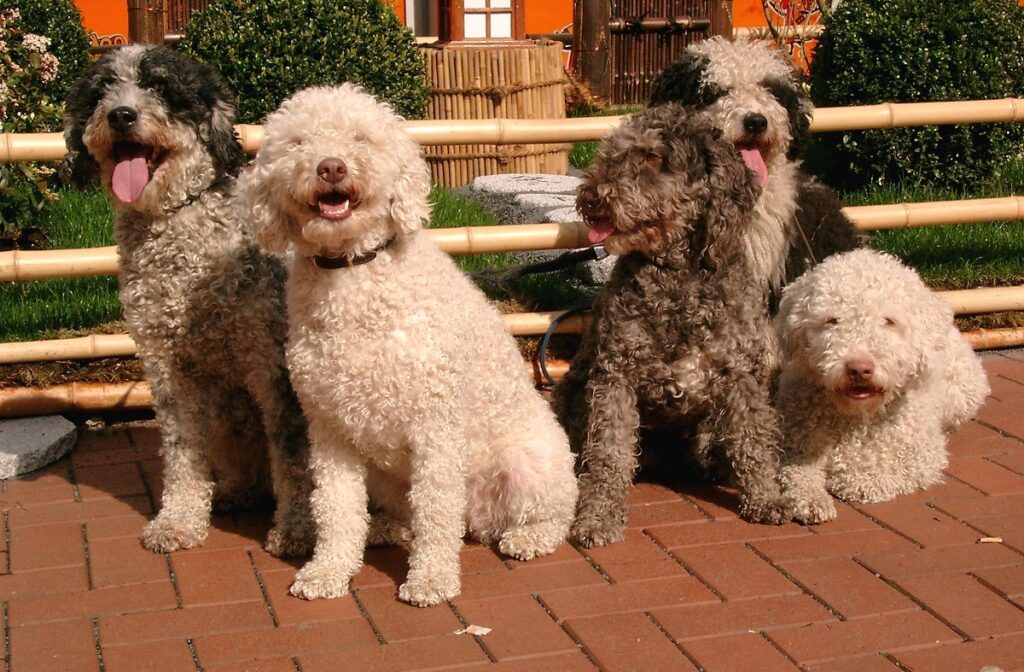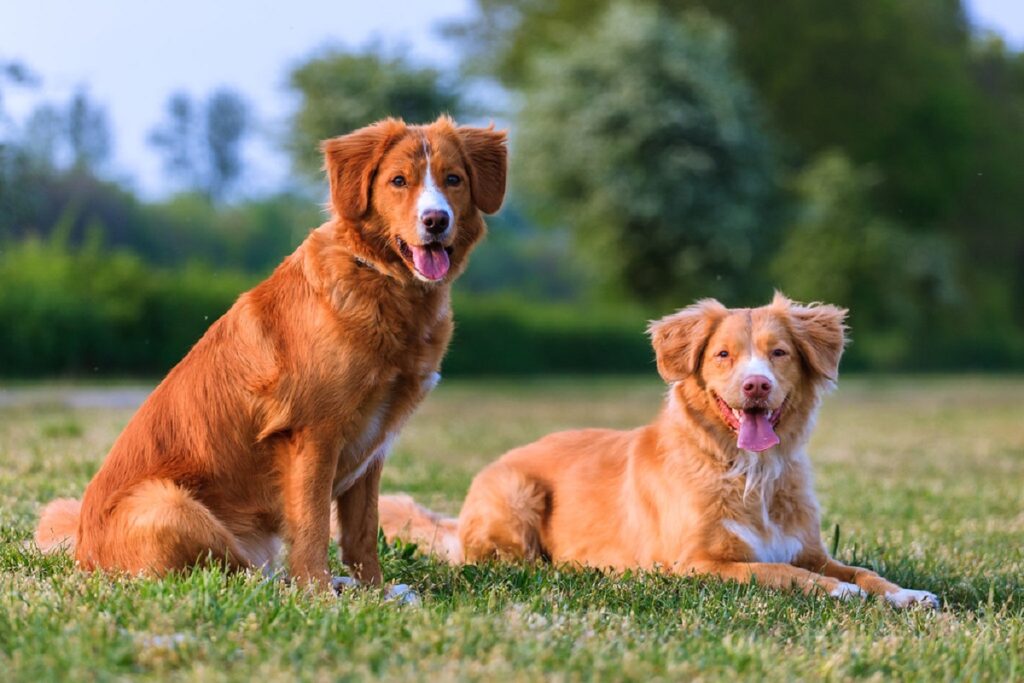Beyond their playful splashes and love for water, these 17 dog breeds offer much more than just impressive swimming skills. From the curly-coated retriever’s retrieving prowess to the Portuguese water dog’s history as a seafaring companion, each breed boasts a unique blend of temperament, talent, and historical significance. Dive into the world of these incredible water dogs, discover their diverse origins and surprising capabilities, and maybe even find your perfect paddling partner. This is more than just a list; it’s a celebration of the dogs that thrive in and out of the water.
Spaniels, poodles, and retrievers… All built to swim. So are water dog breeds simply dogs that love the water? Yes and no. They certainly love water, but they’re so much more. Stick around since we’re going to give you the rundown on these unique canines.
We’ll explain their job descriptions, their temperaments, and how they’re built to withstand extreme temperatures. Water dog breeds are vigilant, hard workers who want to please in a big way, which is why they’re highly trainable.
These breeds were used by ancient mariners and known to the early Romans as “lion dogs” due to the similar mane-like hair they had. These exceptional dogs are talented and incredible companions as well.
Now, let’s delve into the breeds that don’t know how to just let things lie where they fall.
What Is a Water Dog?
Water dogs are eager companions and gundogs built for endurance and bred to flush and retrieve game from water and land.
Characteristics of Water Dogs
These are general characteristics. Every dog is unique and may differ.
- Low shedders
- High-energy
- Barkers
- Powerful
- High endurance
- Adaptable
- Versatile
- Medium to large in size
- Intelligent
- Webbed feet
Water Dog Breeds
From the gentle lapping of lake shores to the vigorous waves of the ocean, these water dog breeds are born with a natural love for aquatic adventures.
1. Golden Retriever
| Group | Sporting |
| Height | 22”-24” |
| Weight | 55-75 lbs. |
| Fur & color | Double-coated – Dark golden, golden, light golden |
| Lifespan | 10-12 yrs. |
| Activity level | High |
| Shedding level | Medium to high |
Friendly, good-natured, and energetic golden retrievers are everyone’s buddies. You’ve probably seen or heard of one as a therapy or service dog, and for a good reason: They love people. Although the breed is highly adaptable, they can present destructive behaviors like destroying property if left alone for long periods.
These dogs, a cross between retrievers and water spaniels, were developed in the 19th century by Scottish waterfowlers. They were looking for a breed with endurance and a soft mouth. (My nephew has a “Golden,” and he’s entirely gentle if my hand ends up in his mouth.)
They have a dense waterproof coat that protects them from frigid water temperatures. This water dog breed is famous for a reason… They’re great family pets and excellent at their job.
2. Labrador Retriever
| Group | Sporting |
| Height | 22”-25” |
| Weight | 55-80 lbs. |
| Fur & color | Double-coated – Black, chocolate, yellow; Non-traditional: Charcoal, silver, champagne, white |
| Lifespan | 11-13 yrs. |
| Activity level | High |
| Shedding level | Medium to high |
Labradors are probably the most famous water dog breed there is. Who doesn’t know what one is?
Some of their roles have been:
- Work – Fetching, retrieving
- Police dogs
- Therapy dogs
- Service dogs
- Search and rescue
- Therapy
- Dog competitions
- Companions
- Tracking
- Agility
Good with children, strangers, other dogs, and even cats, the lab is an all-around good “guy.” This water dog breed has large, webbed toes and a weather-resistant coat that makes them natural in the water. Their double coats insulate them from frigid temperatures.
There are drawbacks to having this breed, as with any other dog. Among other medical conditions, they’re prone to ear infections. Their ears flop over and can pick up bacteria and moisture, which can cause infection, and, of course, they can retain moisture from bodies of water.
Labs originated in Newfoundland, and breeders cull differently from cross dogs, depending on what the Labrador is being bred to do:
- Work/Field potential – Bred for drive and working abilities
- Show/Bench potential – Bred for physical appearance
Until 2022, the Lab had taken the number one position for the American Kennel Club (AKC) “Most Popular Dog Breed.” (The number one spot was scooped up by another breed in 2023, but that’s another article.)
3. Standard Poodle
| Group | Non-sporting |
| Height | Over 15” |
| Weight | 40-70 lbs. |
| Fur & color | Single-coated – 27 possible colors and color mixtures |
| Lifespan | 10-18 yrs. |
| Activity level | High |
| Shedding level | Low |
This water dog breed is one of the best swimmers there are in the dog world. Surprised? Their poofy hairdos have diverted our attention from what they truly are: Working dogs.
According to Gundog Magazine:
The standard poodle has excellent credentials as a working retriever. Hunters all over the country use them successfully in hunting and run them just as effectively in various retriever hunt tests.
The standard poodle started as a retrieving water dog more than 400 years ago in Germany. Europeans from the Middle Ages have always considered the standard poodle to be a hunting dog. Also, the French breed name “caniche” comes from chien canard, or “duck dog.”
The standard poodle’s endurance, energy, and stamina are off the charts, so they need lots of daily exercise – jogging, hiking, or bicycling – for both body and mind to stay happy and fulfilled. Insanely smart and great with kids, these dogs are companion-ready.
4. English Setter
| Group | Sporting |
| Height | 23”-27” |
| Weight | 45-80 lbs. |
| Fur & color | Double-coated – Blue Belton, Blue Belton and tan (tri-color), lemon Belton, liver Belton, orange Belton, white |
| Lifespan | 12 yrs. |
| Activity level | High |
| Shedding level | Medium |
The friendly, affectionate English setter just wants to do what you’re doing, whether it be going on a hike or being a couch potato. They love kids and whatever activities they’re into. Great with other pets and strangers; they’re just a highly adaptable dog.
You might want to keep in mind, though, that they’re not excellent guard dogs since they might welcome an intruder and ask if they’re thirsty.
English setters were originally bred to be hunting dogs 400-500 years ago. They were crossed between old spaniel and pointer breeds. Before guns were prevalent, these dogs would crouch or sit, “set,” when seeing game until hunters threw a large net over the area to harvest the birds. They would later become known as “gun dogs.”
The breed are excellent swimmers and fetch game on land and in water.
English setters excel at:
- Working/Hunting
- Agility competitions
- Rally competitions – When a person navigates his or her dog through a predetermined exercise course quickly.
- Therapy work
- Obedience training
- Being companions
5. American Water Spaniel
| Group | Sporting |
| Height | 15”-18” |
| Weight | 25-45 lbs. |
| Fur & color | Double-coated – Brown, chocolate, liver |
| Lifespan | 10-14 yrs. |
| Activity level | High |
| Shedding level | Low |
Known as the “little brown dog,” this breed is Wisconsin’s state dog, where they were developed in the 19th century. There are only a handful of AKC-recognized sporting breeds that originated in North America, and this dog is one of them.
The following activities would be excellent for this highly active breed:
- Dock diving – Also called “Dock jumping.” It’s a sport/competition where dogs are judged on how far or how high they leap from a stationary dock into a body of water.
- Obedience
- Agility
- Field trials – Retriever Field Trials measure how well dogs can retrieve in the field at longer distances than in hunt tests and are judged in comparison to other dogs entered rather than pass/fail.
6. Barbet
| Group | Sporting |
| Height | 19”-25” |
| Weight | 35-65 lbs. |
| Fur & color | Double-coated – Black, brown, fawn, gray, white |
| Lifespan | 12-14 yrs. |
| Activity level | High |
| Shedding level | Low |
In the 16th century, the Barbet (pronounced Bar-bay) originated in France to hunt waterfowl. The “Mud dog” is a fantastic swimmer and a wonderful family dog, so you know what that means… Trips to the pool or lake! With a wooly coat, it will be a breeze.
In 16th-century documentation, the barbet is mentioned as a popular French water dog breed used as a pointer for hunting game birds and as a marsh/swamp game retriever. According to the Barbet Club of America, “This breed will search for game hidden in water vegetation, locate it, and flush it out. He then retrieves the fallen game to the master.”
Calm and easy-going, they need to be properly exercised to stay that way. Although they might chase small pets since they’re a sporting breed, they can get along well with other dogs and even cats. They love their human family and make wonderful companions.
7. Newfoundland
| Group | Working |
| Height | 26”-28” |
| Weight | 100-150 lbs. |
| Fur & color | Double-coated – Black, brown, gray, white & black, beige, black & tan, white & brown |
| Lifespan | 9-10 yrs. |
| Activity level | Medium to high |
| Shedding level | Medium to high |
Known as the “nanny dog” due to their love of kids, Newfoundlands are patient and even-tempered. This massive dog absolutely loves the water. Newfies have soulful eyes and gorgeous hair (they’re floofballs) and are highly intelligent.
Originating in the Canadian province of Newfoundland, they worked as fishermen’s helpers, hauling nets through icy waters and pulling carts to market.
Their broad chests and immense strength make them superb swimmers; they love swimming, and they’ve bravely saved many human lives.
8. Otterhound
| Group | Hound |
| Height | 24”-27” |
| Weight | 80-115 lbs. |
| Fur & color | Double-coated – 11 possible colors or color mixtures |
| Lifespan | 10-13 yrs. |
| Activity level | High |
| Shedding level | Low to medium |
Big and shaggy, and adorable, this ancient water dog breed is versatile and a great companion animal. They’re experts at scentwork, among other things, with their super sensitive noses.
Friendly and fun-loving, one of today’s breeders’ goals is to keep that disposition alive and well. The otterhound hunts game on land and water, and the Otterhound Club of America says, “…they require a combination of characteristics unique among hounds-most notably a rough, double coat; and substantial webbed feet.”
They were bred in medieval England for otter hunting, which is now outlawed. They’re an ancient breed from the 12th century. They have a smooth gait and are capable of walking many miles a day. Their love of swimming is quite apparent, so anything you can do outside with them, they’ll be right by your side.
9. Boykin Spaniel
| Group | Sporting |
| Height | 14”-18” |
| Weight | 25-40 lbs. |
| Fur & color | Double-coated – Liver |
| Lifespan | 10-15 yrs. |
| Activity level | Medium to high |
| Shedding level | Medium |
Since 1985, the Boykin has been the official state dog of South Carolina since it originated there in the 20th century. Bred to swim in lakes and swamps to hunt and retrieve waterfowl and wild turkey, these dogs can swim circles around most humans and are extremely smart.
Want to go for a run? Take your Boykin spaniel with you. Their endurance might wear you out instead of the other way around. As determined as they are in their jobs, they’re just as gentle at home and get along well with children and other dogs.
10. Chesapeake Bay Retriever
| Group | Sporting |
| Height | 21”-26” |
| Weight | 55-80 lbs. |
| Fur & color | Double-coated – 8 possible colors or color mixtures |
| Lifespan | 10-13 yrs. |
| Activity level | High |
| Shedding level | Medium |
This stout, muscular water dog breed is among the hardest workers in the business. They were developed along the Chesapeake Bay to hunt waterfowl in extreme weather conditions: Freezing temperatures and water, ice, and strong winds and tides. And they’re equally as efficient on land as they are in water.
Chesapeake Bay retrievers are highly intelligent and independent, and as such, they need to learn structure and boundaries early. They’re also human family dogs and good with children and other dogs IF they’ve been socialized when they’re young.
They’re dogs that will persevere and be protective. They love the water, the hunt, and the guardian. Just an all-around great dog for an active family.
11. Curly-Coated Retriever
| Group | Sporting |
| Height | 23”-27” |
| Weight | 60-95 lbs |
| Fur & color | Double-coated – Black, liver |
| Lifespan | 10-12 yrs. |
| Activity level | Medium |
| Shedding level | Low to medium |
Highly intelligent, adaptable, and easy to train, this dog is a jewel. Their coats are absolutely beautiful with tight curls like a poodle (which was/is probably used in their development).
They may not need as much exercise as some other water dog breeds but still need activities like playing with a frisbee or bicycling with you. Having been around since the 18th century, they’re one of the oldest retrieving breeds.
The “Curly” is rare and really loves the water. They’re independent and, at times stubborn, so make sure they know you’re the guardian and they’re not. (Only with positive reinforcement.)
12. Flat-Coated Retriever
| Group | Sporting |
| Height | 22”-25” |
| Weight | 60-70 lbs. |
| Fur & color | Double-coated – Black, liver, yellow |
| Lifespan | 8-10 yrs. |
| Activity level | High |
| Shedding level | Medium |
Related to curly-coated retrievers, the flat-coated retriever shares some similarities with them. Things like “a streak of stubborn” and being highly trainable top the list. They have a happy nature and are difficult to say “No” to with that glossy coat and ready smile.
Their second home is in the water, and they are so good-natured that they generally welcome strangers. Since hunting and retrieving are their strong points, FCRs enjoy exercise that tests their bodies and minds.
13. Irish Water Spaniel
| Group | Sporting |
| Height | 21”-24” |
| Weight | 45-68 lbs. |
| Fur & color | Double-coated – Liver |
| Lifespan | 12-13 yrs. |
| Activity level | High |
| Shedding level | Low |
Main roles: Hunting, flushing, retrieving. These water dogs want to go, go, go and would love to join you for a run, hike, or swim – they’re excellent swimmers and herd fish-like pros. With a dense waterproof coat, the Irish water spaniel can even enjoy cold water.
Versatility is their middle name, and the UK classifies them as both a spaniel and a retriever of spaniel breeds. Irish Water Spaniel dogs have a high prey instinct, so cohabitating with smaller animals/pets might not be a good thing.
Otherwise, Irish Water Spaniels are highly affectionate with kids, other dogs, and even strangers. Often called the clown of the spaniel family, look for hours of entertainment with this breed.
14. Lagotto Romagnolo
| Group | Sporting |
| Height | 16”-19” |
| Weight | 24-35 lbs |
| Fur & color | Double-coated – 7 possible colors or color mixtures |
| Lifespan | 15-17 lbs. |
| Activity level | Medium to high |
| Shedding level | Low |
Naturals at retrieving and swimming, this water dog gets along with just about everyone except small children. (Monitoring is necessary as with any other dog breeds.)
Due to a spot-on sense of smell, they’re the only purebred dog recognized and served as specialist truffle hunters and likely originated in Italy during the 16th century.
And where in the world did they get that name? It comes from “Romagnol can lagòt,” which means “water dog.” This friendly dog would make someone active a happy camper.
15. Portuguese Water Dog
| Group | Working |
| Height | 17”-23” |
| Weight | 35-60 lbs. |
| Fur & color | Double-coated – Black, brown, white, black and white |
| Lifespan | 11-13 yrs. |
| Activity level | High |
| Shedding level | Low to medium |
If you’re a water lover and spend a lot of time near it, the Portuguese water dog is for you. With a naturally water-resistant coat, he’d rather be in it than anything else. In Iberia, they knew how to herd fish into nets, retrieve broken nets, and help out otherwise. They’re superb swimmers and have a unique talent for diving.
This wavy to curly-haired water breed rarely gets tired, so if you’re not on the move, they probably won’t have a fulfilling life. The Portuguese water dog is exceptionally good at getting along with other dogs and most strangers. (There’s always the squirrelly person.) Get ready to start socializing them as early as 4 months old.
16. Spanish Water Dog
| Group | Herding |
| Height | 16”-20” |
| Weight | 31-49 lbs |
| Fur & color | Corded – 14 possible colors and color mixtures |
| Lifespan | 12-14 yrs. |
| Activity level | Medium to high |
| Shedding level | Low |
This water dog breed is quite territorial and makes excellent watchdogs. They would be perfect in a single-pet household since they’re not great with strangers, children, or cats.
The Spanish water dog was originally developed in Spain, where they started as all-purpose farm dogs. Easy to train, they can enjoy the following:
- Agility
- Dock diving
- Herding
- Nose work
- Obedience
- Rally
- Tracking.
17. Nova Scotia Duck Tolling Retriever
| Group | Sporting |
| Height | 17”-21” |
| Weight | 35-50 lbs. |
| Fur & color | Double-coated – Red, buff, red gold |
| Lifespan | 12-14 yrs. |
| Activity level | Medium to high |
| Shedding level | Medium |
Duck tolling?… It’s a Middle English word meaning the dog’s ability to lure and decoy game within shooting range. To say they’re intelligent would be an understatement.
It’s believed the Nova Scotia duck tolling retriever was developed in the 19th century in Nova Scotia, Canada. Highly adaptable, they know when to put their prey drive on the sidelines when they’re in the home. They’re the ideal family pet and the perfect hunting dog.
Swimming Safety Tips for Your Water Dog
- Educate yourself on how to train a water dog.
- Always check weather conditions before going, including checking currents.
- Dogs should always wear a life vest. Fatigue is real.
- Stay away from waters that have blue-green algae that can make your dog sick.
- Know how to give canine CPR.
- Always clean and thoroughly dry your dog’s ears after swimming to prevent infections.
- Give them a bath after swimming to remove anything that could be harmful.
- Never leave your dog alone in the water.
FAQs
What Is the Largest Water Dog Breed?
The Newfoundland is the largest water dog breed.
Are Water Dogs Usually Friendly?
Absolutely. They make wonderful family animals.
What Breed of Dog Is Considered a Water Dog?
The most well-known are poodles, spaniels, and retrievers, but there are many more.
Final Thoughts
As you consider your options for water dog breeds, make sure to remember they are usually highly active. Although they can lie around on the couch with the best of them, it’s only a place to rest and not to live.
These breeds are contagiously lovable, and you might find yourself never being the guardian of a different type of dog. Just be sure to pack your swimwear when you’re with them.
These 17 water dog breeds showcase remarkable versatility beyond their innate swimming abilities. From the powerful Newfoundland performing water rescues to the agile Portuguese Water Dog herding fish, their specialized skills and temperaments highlight a history intertwined with humans and water. While their love for swimming remains a defining characteristic, these breeds offer much more as companions – intelligence, loyalty, and a playful spirit ensure they’re cherished members of the family on land just as much as in the water. Choosing the right water dog requires careful consideration of individual breed traits to find the perfect fit for your lifestyle.

